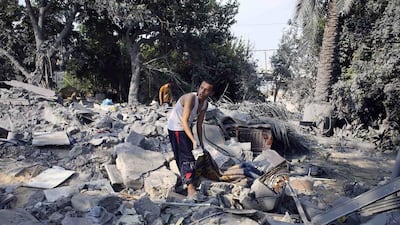Locked in Gaza for years, denied adequate food, medicine and water, life for the population of the “world’s largest prison” is horrendous. Ever since Israel began its collective punishment of the Palestinian territory in 2007, life has become steadily worse. And yet the world rarely takes notice of the humanitarian disaster until the next round of war starts.
This is the tragedy of Gaza and of the Palestinian people in general. The brutal occupation – the worst and longest running of the modern era – tends to fall off the front pages and what Israel calls the “status quo” continues. This round started after Israel killed a Hamas leader and the group retaliated with rocket fire, which led to the current massacre.
As much as the Israeli propaganda machine has hyped up the threat of rocket fire from Gaza, the reality is these rockets are rarely deadly, apart from occasional tragedies. Contrast that with Israeli rockets, which meet their civilian targets with such regularity that most outside observers conclude that Israel either cannot target its rockets or is deliberately hitting civilians. Photographs of three boys playing on a beach in Gaza and slaughtered by a mortar rather suggest that is the case.
Yet despite world opinion turning away from Israel, Hamas have yet to capitalise on this, yet to utilise what is their strongest weapon: information. The missiles that Hamas fires into Tel Aviv will never succeed in ending the siege, only in increasing the “price” that Israel has to pay for it. But ordinary Palestinians pay a higher one, as Israel seeks retribution.
Far better for Hamas to use the power of public relations. Israel’s PR machine is slick but suffers from the crucial problem of facts: all the gloss cannot disguise the slaughter. But Hamas has the opposite problem. It does not invite journalists into Gaza to see the daily grind of the siege, does not make its spokespeople accessible.
There is, of course, a problem here, in that Israel has form in targeting journalists – just yesterday it issued leaflets to journalists in Gaza, warning them that they were considered “fair game” during its ground invasion. But Hamas must dedicate itself to the public relations message with as much vigour as it does to acquiring weaponry and building tunnels.
What will eventually end the siege is the public relations disaster of Israel’s actions, which is already leading to protests, boycotts and sanctions. Hamas must speed up that process.

